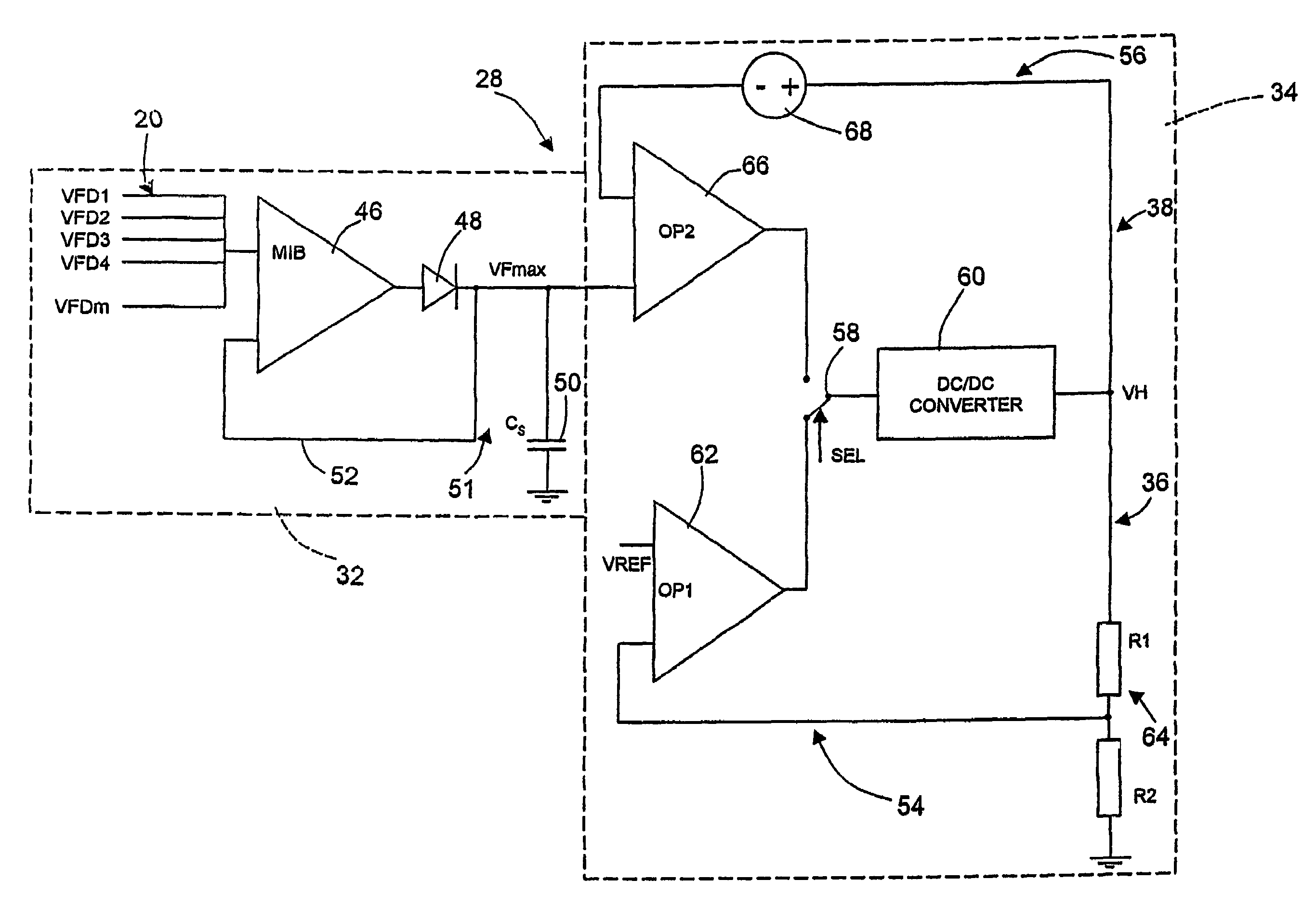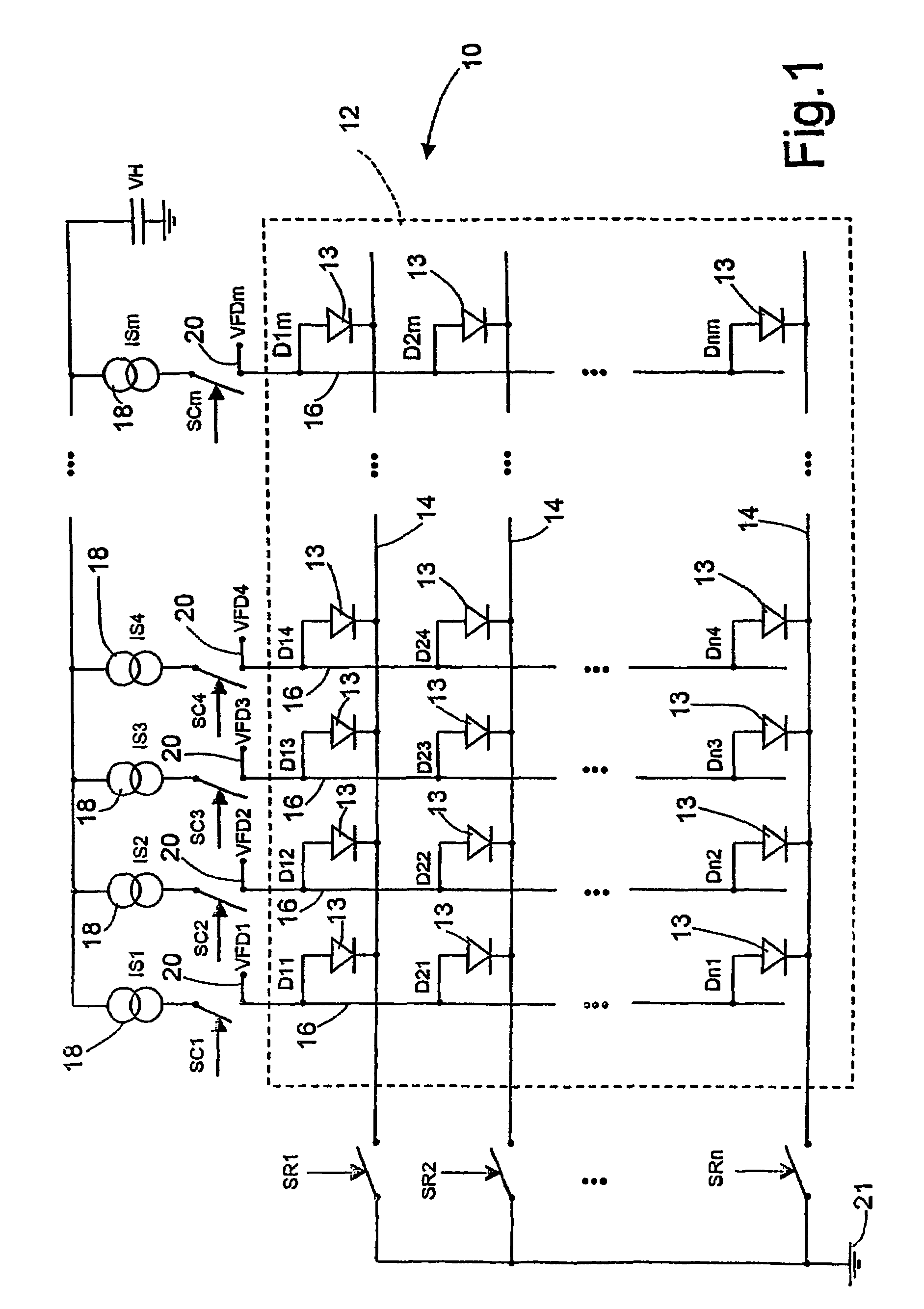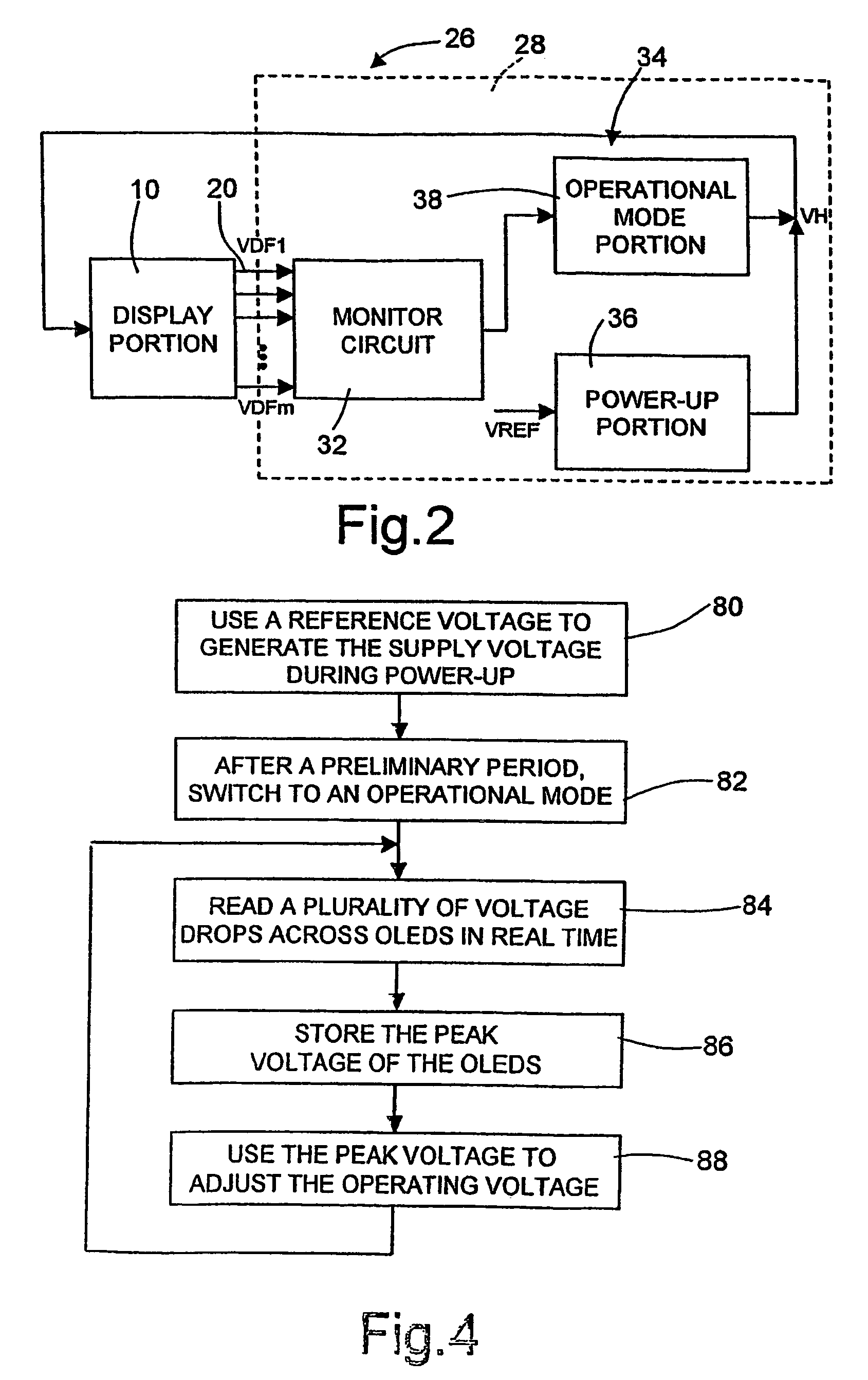Driver for an OLED passive-matrix display
a technology of organic lightemitting diodes and drive shafts, applied in the field of drives, can solve the problems of reducing the uniformity of pixel-to-pixel luminance, limiting the life of lcds, and separating light sources, and achieve the effect of efficient power-up mode operation
- Summary
- Abstract
- Description
- Claims
- Application Information
AI Technical Summary
Benefits of technology
Problems solved by technology
Method used
Image
Examples
Embodiment Construction
[0018]FIG. 1 shows a display portion 10 of an OLED passive-matrix display. A matrix 12 of OLEDs 13 includes parallel rows 14 of conductors positioned orthogonally to parallel columns 16 of conductors. Each row 14 includes OLED Dx1 to Dxm (where x is the row number and m is the number of columns), and each column 16 includes OLEDs D1x to Dnx (where n is the number of rows and x is the column number). Each column is biased with a current generator 18 (1 to m) coupled at its upstream end to a voltage source VH and at its downstream end to one of the column switches SC1-SCm. Each row 14 includes one of the row switches SR1-SRn with its upstream end coupled to the OLEDs, and its downstream end coupled to a cathode 21. Column switches SC1-SCm and row switches SR1-SRn are independently switchable so that each OLED can be selected individually irrespective of the other OLEDs. To measure voltage directly across the OLEDs, voltage taps 20 are coupled to the columns as indicated at VFD1-VFDm. ...
PUM
 Login to View More
Login to View More Abstract
Description
Claims
Application Information
 Login to View More
Login to View More - R&D
- Intellectual Property
- Life Sciences
- Materials
- Tech Scout
- Unparalleled Data Quality
- Higher Quality Content
- 60% Fewer Hallucinations
Browse by: Latest US Patents, China's latest patents, Technical Efficacy Thesaurus, Application Domain, Technology Topic, Popular Technical Reports.
© 2025 PatSnap. All rights reserved.Legal|Privacy policy|Modern Slavery Act Transparency Statement|Sitemap|About US| Contact US: help@patsnap.com



